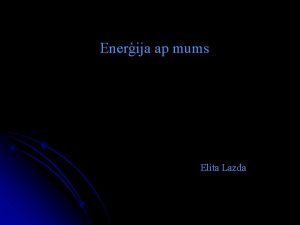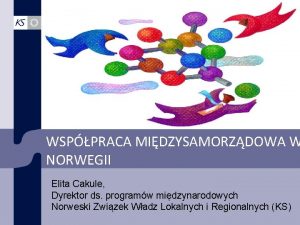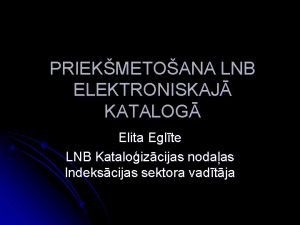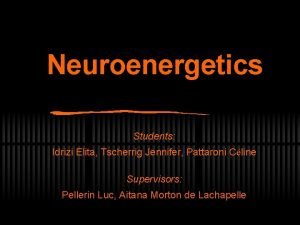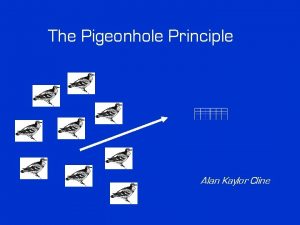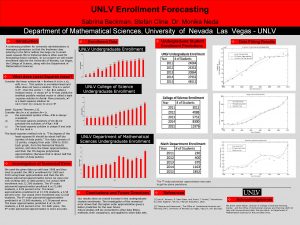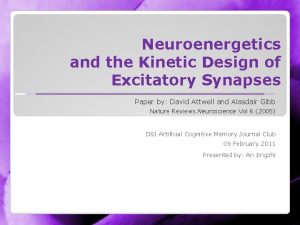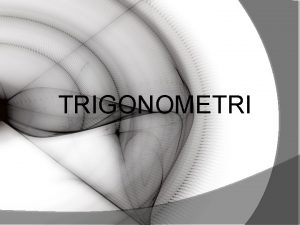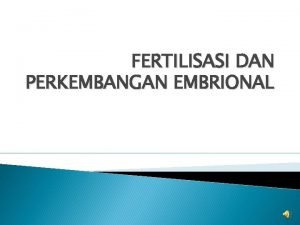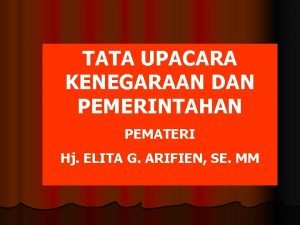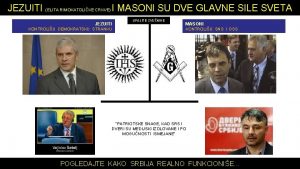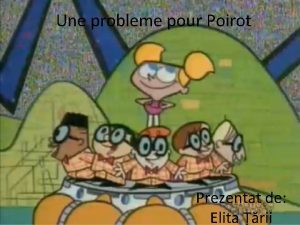Neuroenergetics Students Idrizi Elita Tscherrig Jennifer Pattaroni Cline








![Transport and metabolism of glucose Ge+T [Ge. T] k 1, k-1 [Gn. T] Gn+T+E Transport and metabolism of glucose Ge+T [Ge. T] k 1, k-1 [Gn. T] Gn+T+E](https://slidetodoc.com/presentation_image/29aa4a1b4e341f7ea06480e2b7ea41a8/image-9.jpg)
![1) Metabolism Gn+H [Gn. H] k 1, k-1 Gn*+H k 2 - Hypotheses: 1. 1) Metabolism Gn+H [Gn. H] k 1, k-1 Gn*+H k 2 - Hypotheses: 1.](https://slidetodoc.com/presentation_image/29aa4a1b4e341f7ea06480e2b7ea41a8/image-10.jpg)
![2) Transport Ge+T [Ge. T] k 1, k-1 [Gn. T] k 2, k-2 Gn+T 2) Transport Ge+T [Ge. T] k 1, k-1 [Gn. T] k 2, k-2 Gn+T](https://slidetodoc.com/presentation_image/29aa4a1b4e341f7ea06480e2b7ea41a8/image-11.jpg)



- Slides: 14

Neuroenergetics Students: Idrizi Elita, Tscherrig Jennifer, Pattaroni Céline Supervisors: Pellerin Luc, Aitana Morton de Lachapelle

Goals of the project - Transport / metabolism of glucose and lactate ratelimiting for the brain? -> Glucose: Barros -> Lactate: our project! - Using mathematical tools (matlab) to enforce the hypothesis of lactate

Biological aspects

Glucose - lactate ü Glucose: principal energetic substrat of the brain ü Lactate: energetic substrat of neurones ü Hypothesis of lactate: glucose transformed into lactate by the astrocytes to feed the neurones in extreme conditions of necessity of energy

Aspects biologiques détaillés

Main problems ü The transport of glucose is important to define its metabolism and contrariwise ü Solve mathematically the transport and metabolism of lactate in the neurones like Barros did it for the glucose

Mathematical aspects 1. Analytical and numerical methods 2. 1 st part: transport and metabolism of glucose 1. 2 nd part: transport and metabolism of lactate

Analytical and numerical methods Example: production of a protein d. P/dt = a*P analytical numerical P(t) = Po * eat no formula
![Transport and metabolism of glucose GeT Ge T k 1 k1 Gn T GnTE Transport and metabolism of glucose Ge+T [Ge. T] k 1, k-1 [Gn. T] Gn+T+E](https://slidetodoc.com/presentation_image/29aa4a1b4e341f7ea06480e2b7ea41a8/image-9.jpg)
Transport and metabolism of glucose Ge+T [Ge. T] k 1, k-1 [Gn. T] Gn+T+E k 2, k-2 d[Ge. T]/dt = k 1* Ge * T - k-1 * [Ge. T] - k 2 * [Ge. T] + k-2 * [Gn. T] Ge T Gn E extracellular glucose transporter (GLUT) neuronal glucose hexokinase * phosphorylation [Gn. E] Gn*+E
![1 Metabolism GnH Gn H k 1 k1 GnH k 2 Hypotheses 1 1) Metabolism Gn+H [Gn. H] k 1, k-1 Gn*+H k 2 - Hypotheses: 1.](https://slidetodoc.com/presentation_image/29aa4a1b4e341f7ea06480e2b7ea41a8/image-10.jpg)
1) Metabolism Gn+H [Gn. H] k 1, k-1 Gn*+H k 2 - Hypotheses: 1. Hypothesis of pre-equilibrium: rapid equilibration of Gn. H 2. Hypothesis of total hexokinase concentration : Htot = H+[Gn. H] 3. Max speed reached when all enzymes form a complex with Glc: Vmax = k 2*Htot M-M constant : Km = k 2+k-1 / k 1 - Solution: vm = (Gn*Vmax)/(Gn+Km) irreversible Michaelis-Menten kinetics
![2 Transport GeT Ge T k 1 k1 Gn T k 2 k2 GnT 2) Transport Ge+T [Ge. T] k 1, k-1 [Gn. T] k 2, k-2 Gn+T](https://slidetodoc.com/presentation_image/29aa4a1b4e341f7ea06480e2b7ea41a8/image-11.jpg)
2) Transport Ge+T [Ge. T] k 1, k-1 [Gn. T] k 2, k-2 Gn+T k 3, k-3 - Hypotheses: 1. Hypothesis of pre-equilibrium: rapid equilibration of Ge. T, Gn. T 2. Hypothesis of transport speed: dissociation of Ge. T and Gn. T faster than transport (reversible Michaelis-Menten kinetics) dissociation constants : ke=k-1/k 1 and kn=k 3/k-3 3. Hypothesis of total GLUT transporters concentration: Ttot = T + [Ge. T] + [Gn. T] 4. Max speeds for Glc transport inside and outside the neuron : Vmax. IN = k 2*Ttot and Vmax. OUT = k-2*Ttot - Solution: vt = k 2[Ge. T] – k-2[Gn. T] = (Vmax. IN*(Ge/ke) - Vmax. OUT*(Gn/kn))/(1+(Ge/ke)+(Gn/kn))

Our graphics

Graphics (Barros)

Conclusions: analytical and numerical methods Analytical results: - Advantages: simple formula - Desadvantages: many hypotheses Numerical simulations: To follow (lactate)…
